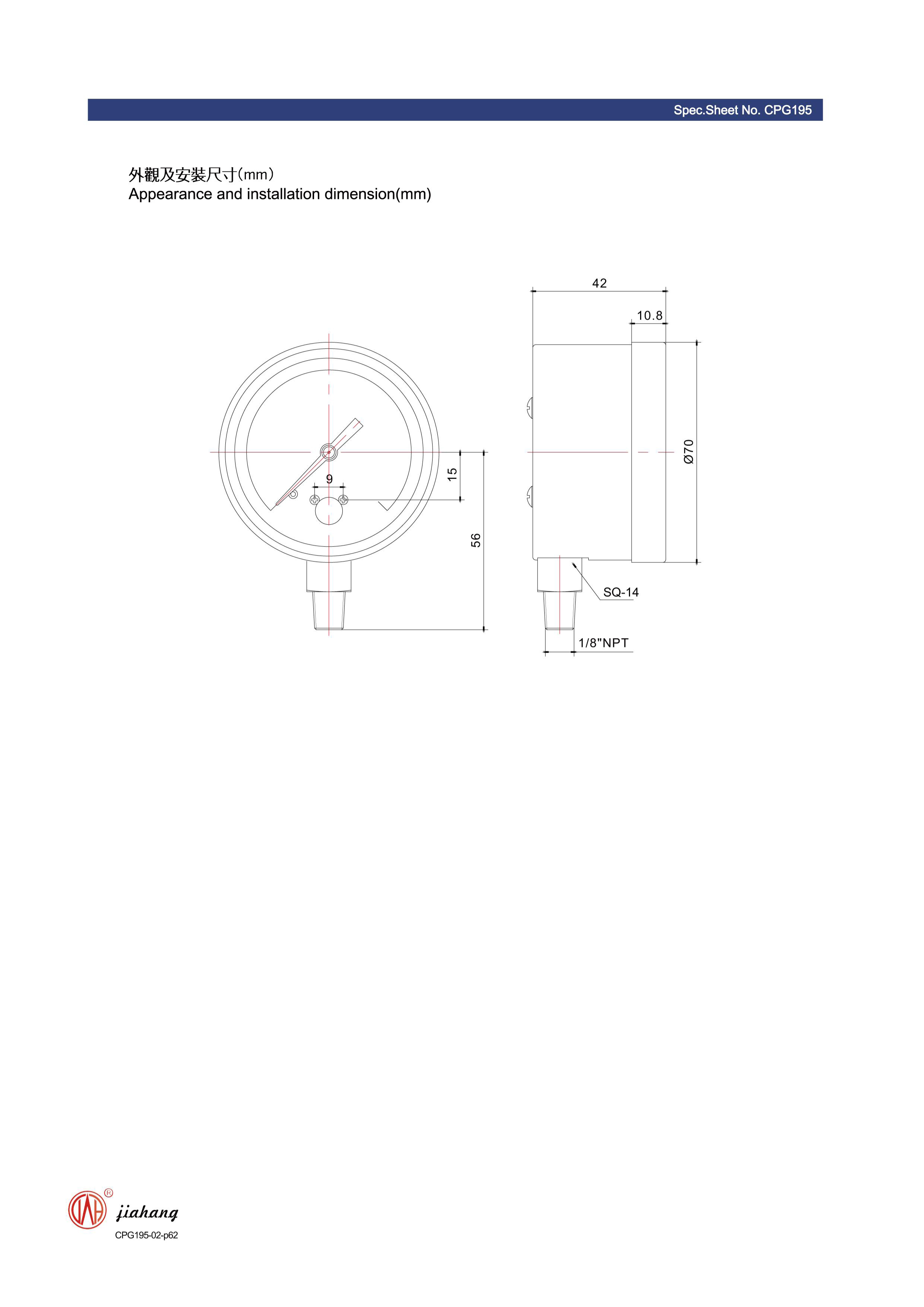
Sep . 19, 2024 08:48 Back to list
remote diaphragm seal pressure gauge product
Understanding Remote Diaphragm Seal Pressure Gauges
In various industrial applications, accurate pressure measurement is critical for maintaining system integrity and ensuring safety. One of the advanced tools used for this purpose is the remote diaphragm seal pressure gauge. This specialized instrument combines the functionalities of a standard pressure gauge with a diaphragm seal, allowing it to measure pressures in challenging conditions while providing reliable readings.
What is a Remote Diaphragm Seal Pressure Gauge?
A remote diaphragm seal pressure gauge consists of two primary components the diaphragm seal and the pressure gauge. The diaphragm seal, typically made of materials like stainless steel or Inconel, acts as a barrier that isolates the pressure measuring device from the process medium. This is particularly beneficial in applications where the fluid is corrosive, viscous, or contains solid particles. The diaphragm flexes in response to the pressure of the fluid, transmitting this force to the pressure gauge via a filled capillary tube.
The remote aspect refers to the separation of the pressure sensing element from the gauge itself. This design allows the pressure gauge to be located in a safe or convenient position, away from heat, vibration, or hazardous materials, while still accurately measuring the pressure of the fluid in the process line.
Applications of Remote Diaphragm Seal Pressure Gauges
These gauges are widely used in various industries, including chemical processing, oil and gas, pharmaceuticals, and food and beverage. In chemical processing, for example, they can measure the pressure of corrosive substances without being damaged. Similarly, in the oil and gas industry, these gauges are invaluable for monitoring pressure in pipelines that transport thick viscous fluids.
Additionally, in the pharmaceutical and food industries, maintaining sanitary conditions is paramount
. Remote diaphragm seal pressure gauges can be designed with sanitary fittings and materials that meet stringent cleanliness standards, making them ideal for applications requiring high hygiene levels.remote diaphragm seal pressure gauge product

Advantages of Remote Diaphragm Seal Pressure Gauges
1. Protection from Process Medium By isolating the pressure measuring system from the fluid, these gauges can operate in harsh environments without compromising their integrity or accuracy.
2. Versatility Available in various configurations, including different diaphragm materials and sizes, remote diaphragm seal gauges can be tailored to suit specific applications.
3. Safety By placing the gauge away from the process medium, operators can safely monitor pressure while reducing the risk of accidents and exposure to hazardous materials.
4. Reduced Maintenance The design minimizes wear and tear on the gauge, leading to longer service life and reduced maintenance costs.
5. Accurate Readings Despite the distance between the diaphragm and the gauge, advancements in technology ensure that the readings remain precise and reliable.
Conclusion
Remote diaphragm seal pressure gauges play a vital role in providing accurate and reliable pressure measurements in demanding environments. By combining the benefits of a diaphragm seal with a traditional pressure gauge, these instruments offer enhanced protection, versatility, and safety. Their ability to function effectively in various industries underscores their importance in modern industrial processes, making them an essential tool for maintaining operational efficiency and safety.
-
High-Quality Pressure Gauge on Fire Extinguisher - Reliable Water Fire Extinguisher Pressure Gauge Suppliers & Exporters
NewsJul.08,2025
-
High-Quality Water Pressure Differential and Gauge Kit Reliable Manufacturers & Competitive Quotes
NewsJul.08,2025
-
High-Precision Digital Diaphragm Pressure Gauge – Reliable Manufacturer & Competitive Quotes
NewsJul.07,2025
-
Wholesale Diaphragm Pressure Gauge Supplier - Premium Quality & Competitive Price
NewsJul.07,2025
-
Digital Diaphragm Pressure Gauge Reliable & Precise Measurement Top Manufacturers Quotes
NewsJul.06,2025
-
High Accuracy Piston Type Differential Pressure Gauge - Reliable Manufacturers & Competitive Quotes
NewsJul.06,2025
